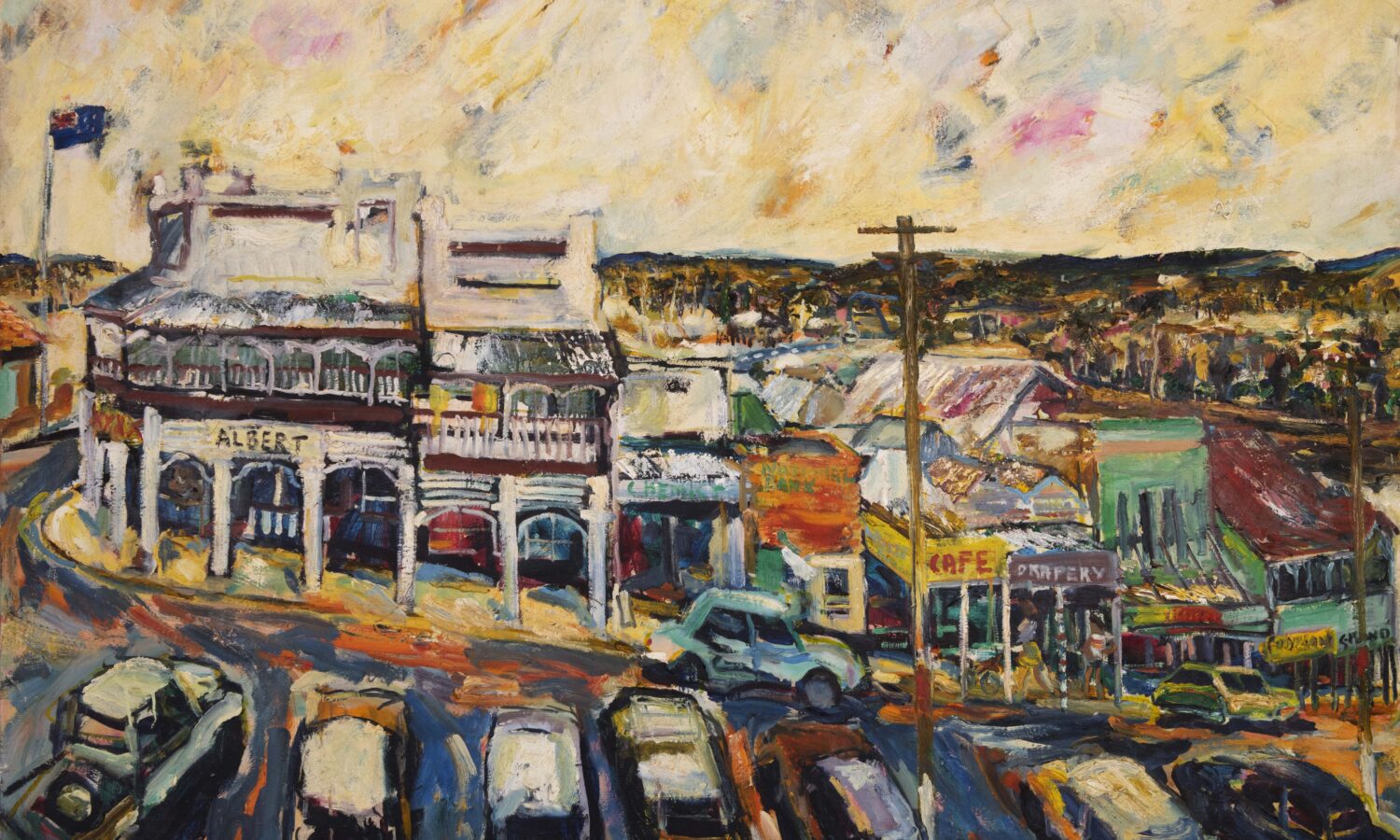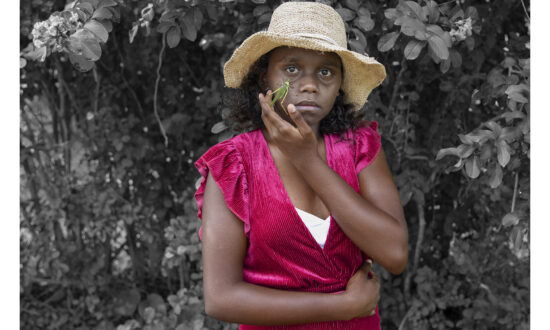As an Antipodean enclave, the new Monto Museum of Art has only been on its feet for 18 months.
But the Queensland town of Monto in the North Burnett has long styled itself as an arts town – with an arts walk, brightly coloured fibreglass cows and murals populating public spaces.
In 2024 Monto celebrates 100 years of settlement. Centenary celebrations will kick off with the Monto Show at the end of April, culminating with the Festival of the Three Moons at the beginning of October.
MMOA, which is dedicated to the work of my father, the late Gil Jamieson, is preparing for this augmented visitor stream and the rekindling of nostalgia of bygone eras.
When Gil was alive, he was the town’s artist, although he exhibited mostly in Melbourne and Rockhampton. His work was well shared locally, reflecting his lived experience and the story of his hometown, which also happens to be mine.
Outwardly seen as a bohemian, Gil was a man from Monto, born from the first generation of farmers established by Closer Settlement.
Monto’s creation began with a post-World War One soldier settler influx in 1924, signalling a separation from the earlier and brutal frontier wars. The expansion of rural stations from the 1850s onwards had also facilitated the mining of elusive gold and copper riches.
Gil Jamieson (1934-1992) died more than 30 years ago, leaving a legacy of 3000 artworks stored in his studio. We think this number is half of what he painted.
Gil was better known in Melbourne than he was in his home state, although in Monto he was always a legend. He was represented by renowned dealers Rudy Komon and Kym Bonython and once exhibited with Philip Bacon Galleries in Brisbane.
After a 2019 exhibition of his work called The Resurrection, Monto has sought to rehabilitate Gil Jamieson. The MMOA now has an enormous space on the town’s main street, Newton Street, in two buildings – art deco-style structures built in the 1950s.
On a budget, and with a lot of voluntary contributions, the space was renovated to hang Gil’s works, including Jay Creek, his epic 21.6m-long desert panorama that was first displayed at Tolarno Galleries in Melbourne in 1973. It now rotates with his other large works at MMOA.
Gil was an expressionist who occupied a space he called “romantic figurative”. He associated with Victorian artists Fred Williams, John Percival, Edwin Tanner and George Johnson and also Queensland artists Sam Fullbrook and Gordon Shepherdson.
The distinction between Gil and the Antipodean landscape painters was that he was born of the bush and his work expressed its uncomfortable realities and mysticism, along with narratives of landscape and rural life.
Continuing MMOA’s work with Birrunga Wiradyuri of Birrunga Gallery in Brisbane, we hosted a group of Cultural Creative Development Program First Nation artists in September. This arts project, working in conjunction with the Wayne Weaver Foundation, was supported by the Queensland Community Fund, now called Queensland Gives.
Both Wayne Weaver and Birrunga Wiradyuri have impressed on me the importance of telling the stories in Gil’s artwork. Both have interest in Gil’s depiction of where he walked in the aftermath of that period which tried to erase the First Nations people and their stories from the landscape.

Get InReview in your inbox – free each Saturday. Local arts and culture – covered.
Thanks for signing up to the InReview newsletter.
With renovations funded by the Queensland Gambling Community Benefit Fund, MMOA will re-open in March 2024 and start exhibit the works of other artists. In April 2024, MMOA will feature a joint project of the Wayne Weaver Foundation and Birrunga Gallery – the travelling show, Colonisation.
With this milestone, we start a program of guest exhibitions from Birrunga Gallery as companion pieces to the work of Gil Jamieson.
Matthew Jamieson is the son of artist Gil Jamieson and co-founder and acting director of Monto Museum of Art.
facebook.com/MontoMOA
Support local arts journalism
Your support will help us continue the important work of InReview in publishing free professional journalism that celebrates, interrogates and amplifies arts and culture in South Australia.
Donate Here




